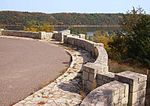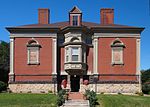Siegel, Minnesota
AC with 0 elementsTwin Cities, Minnesota geography stubsUnincorporated communities in MinnesotaUnincorporated communities in Washington County, Minnesota
Siegel is an unincorporated community in Baytown Township, Washington County, Minnesota, United States. The community is located south of Oak Park Heights near the junction of Washington County Roads 14 and 24. Nearby places include Oak Park Heights, Bayport, and Stillwater. Siegel is located within section 9 of Baytown Township.
Excerpt from the Wikipedia article Siegel, Minnesota (License: CC BY-SA 3.0, Authors).Siegel, Minnesota
Osgood Avenue North, Baytown
Geographical coordinates (GPS) Address Nearby Places Show on map
Geographical coordinates (GPS)
| Latitude | Longitude |
|---|---|
| N 45.015555555556 ° | E -92.806944444444 ° |
Address
Osgood Avenue North 4587
55082 Baytown
Minnesota, United States
Open on Google Maps









